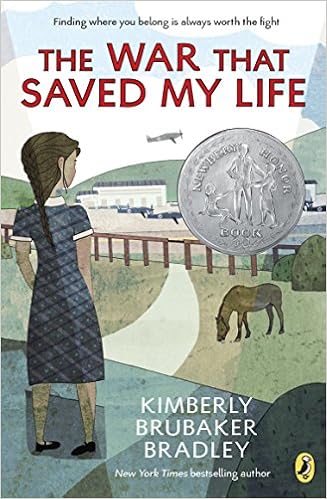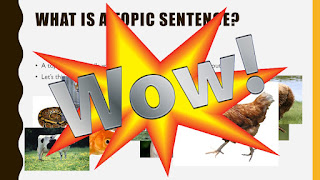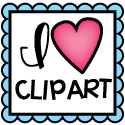I wrote the following for a school assignment and thought I'd share. :)
Our
current teaching methods are obsolete for today’s students. The traditional
methods used in today’s classroom do not teach to the individual student and it
just doesn’t work for the modern student. Students are so diverse that they
cannot all be expected to learn the same way at the same time. Modern methods
are also test focused and not student focused. This all needs to change.
Progressivism is a viable option for modern curriculum.
It is debated if a progressivism reform movement took
place during the turn of the twentieth century. Around 1890-1919 “the
philosophical, pedagogical, and administrative underpinnings of what is, in the
early twenty-first century, associated with modern schooling, coalesced and
transformed, for better or worse, the trajectory of twentieth-century American
education.” (Loss & Loss, 2002) Everything
completely changed during this time. Progressivism is contrary to traditional
learning in that it is student lead and not teacher lead. Most progressive
education programs include some common qualities such as, learning through
activities and actions, thematic units, critical thinking and problem solving
is a big focus, collaborative learning, actually learning and understanding the
information instead of just memorizing, personalized education, service
learning projects integrated into daily curriculum, varied learning resources
(less focus on text books), and ,one of my favorites, assessments based on
students’ projects instead of tests. Can you imagine what learning would be
like if students were taught this way? Students would be tested on what they
actually learned instead of what they memorized for the test. Students would
learn other skills like being kind to one another, working with a group, and
how to find information instead of just using a text book to give them the
information they need. So many more life skills would be learned without having
to add more hours to the school day.
Problems stem from the society’s desire to have students
sit in a classroom and act like adults. We are squashing the childhood out of
them. This is resulting in many more students being treated for ADHD and other
behavioral issues because they are not getting the opportunity to act like
children. Children diagnosed with ADHD increased from 7.8% in 2003 to 11% in
2011. Strauss states, “The problem: children are constantly in an upright
position these days. It is rare to find children rolling down hills, climbing
trees, and spinning in circles just for fun… Children are not nearly moving
enough, and it is really starting to become a problem.” (Strauss, 2014) Some children have to focus so much on obeying
the rules to act like adults that they miss the lessons. If the lessons were
taught to the student, then that little girl who has so much energy could
practice addition by doing jumping jacks instead of having to count the dots on
her piece of paper.
Our
teaching methods must change because we are ruining our children. The current
teaching methods may work in college, but not in elementary school. “It imposes
adult standards, subject-matter, and methods upon those who are only growing
slowly toward maturity. The gap is so great that the required subject-matter,
the methods of learning and of behaving are foreign to the existing capacities
of the young. They are beyond the reach of the experience of the young learners
already possess. Consequently, they must be imposed; even though good teachers
will use devices of art to cover up the imposition so as to relieve it of
obviously brutal features.” (Dewey, 1938)
Even in 1938 they were beginning to see a problem with the way adults expected
children behave in school. They needed to teach based on the child’s
experiences. A seven year old hasn’t had a lot of experience sitting still and
listening or reading to learn. That child has had experience learning through
play. All of a sudden we, as a society, expect them to be able to sit still and
want to listen to learn. That is not the way to develop a love of learning in
any child.
So much is different for students today; however, curriculum
today is mostly the same as it was twenty years ago. There may be different
content, but it is delivered in the same way. In today’s world, our children do
everything quicker. Their lives are busier, they use computers and video games.
Everything moves at a faster pace with more colors and sounds. Why are our
teaching methods the same as they were when I was in school? Curriculum “…is
taught as a finished product, with little regard either to the ways in which it
was originally built up or to changes that will surely occur in the future.” (Dewey, 1938) Changes have
occurred in our children. We need to make those changes occur in our teaching
methods as well. The content changes because our society continues to grow,
therefore, our methods should change to match that growth of our society.
Student are all so varied. They have different
backgrounds, different lifestyles, different family units; the country is full
of diversity. Why do we think that every child would be ready to learn the
exact same way? We need to start teaching the student and stop teaching the
standards. “… The knowledge and skill of the mature person has no directive
value for the experience of the immature. Basing education upon personal
experience may mean more multiplied and more intimate contacts between the
mature and the immature than ever existed in the traditional school, and
consequently more, rather than less, guidance by others.” (Dewey, 1938)
Teaching to the student would take more time, but to the student, it would be
worth it. In order to teach to the students’ experiences, we must learn the
students’ experiences.
Traditional teaching methods rely on testing. Testing is
the top priority. This leads to other problems. Schools are giving less
attention to the subjects not tested. The focus is now on reading and math.
“71% of districts are reducing time spent on other subjects in elementary
schools – at least to some degree. The subject most affected is social studies…”
(Jennings & Rentner, October 2006). Most schools focus
a specific amount of time for reading. High poverty districts are even more
likely to focus much of their time on reading. Social Studies, Science, and the
arts are getting left behind. If a teaching method such as progressivism was
used, the student gets graded on projects they do and not test scores. Much of
reading and writing could even be combined with some of the other subjects
getting left out so students can continue working on reading and writing as
they learn about these other exciting and important subjects.
Too much emphasis is based on testing. Not all students
test well. This makes it a problem when states require standardized testing for
funding. “Students are taking many more tests…. In 2002, 19 states had annual
reading and mathematics tests in grades 3-8 and once in high school; by 2006,
every state had such testing.” (Jennings & Rentner, October 2006)
In a society where we celebrate people’s differences, we
sure do a lot to cram education into a one size fits all box. It’s time to
begin teaching our children from a young age to embrace their differences. It’s
okay if they learn differently or if they’re good at something else that may
not be tested. It is okay, because every person is different; every student is
different. Therefore, students should be taught as if they are different. A
viable curriculum option is progressivism.
Works Cited
Dewey, J. (1938). Experience and Education.
New York: Touchstone.
Jennings, J., & Rentner, D. S. (October 2006).
Ten Big Eggects of the No Child Left Behind Act on Public School. Phi Delta
Kappan, Vol. 88, No. 02, 110-113.
Loss, C. G., & Loss, C. P. (2002). Progressive
Education. In Encyclopedia of Education. The Gale Group Inc.
Strauss, V. (2014, July 8). Why So Many Kids Can't
Sit Through Schoo Today. Retrieved from The Washington Post:
https://www.washingtonpost.com/blogs/answer-sheet/wp/2014/07/08/why-so-many-kids-cant-sit-still-in-school-today/



















